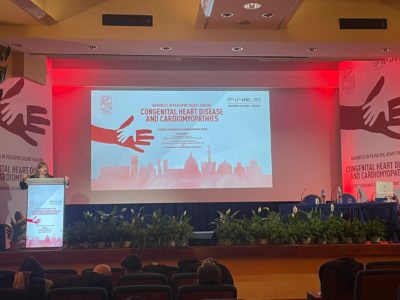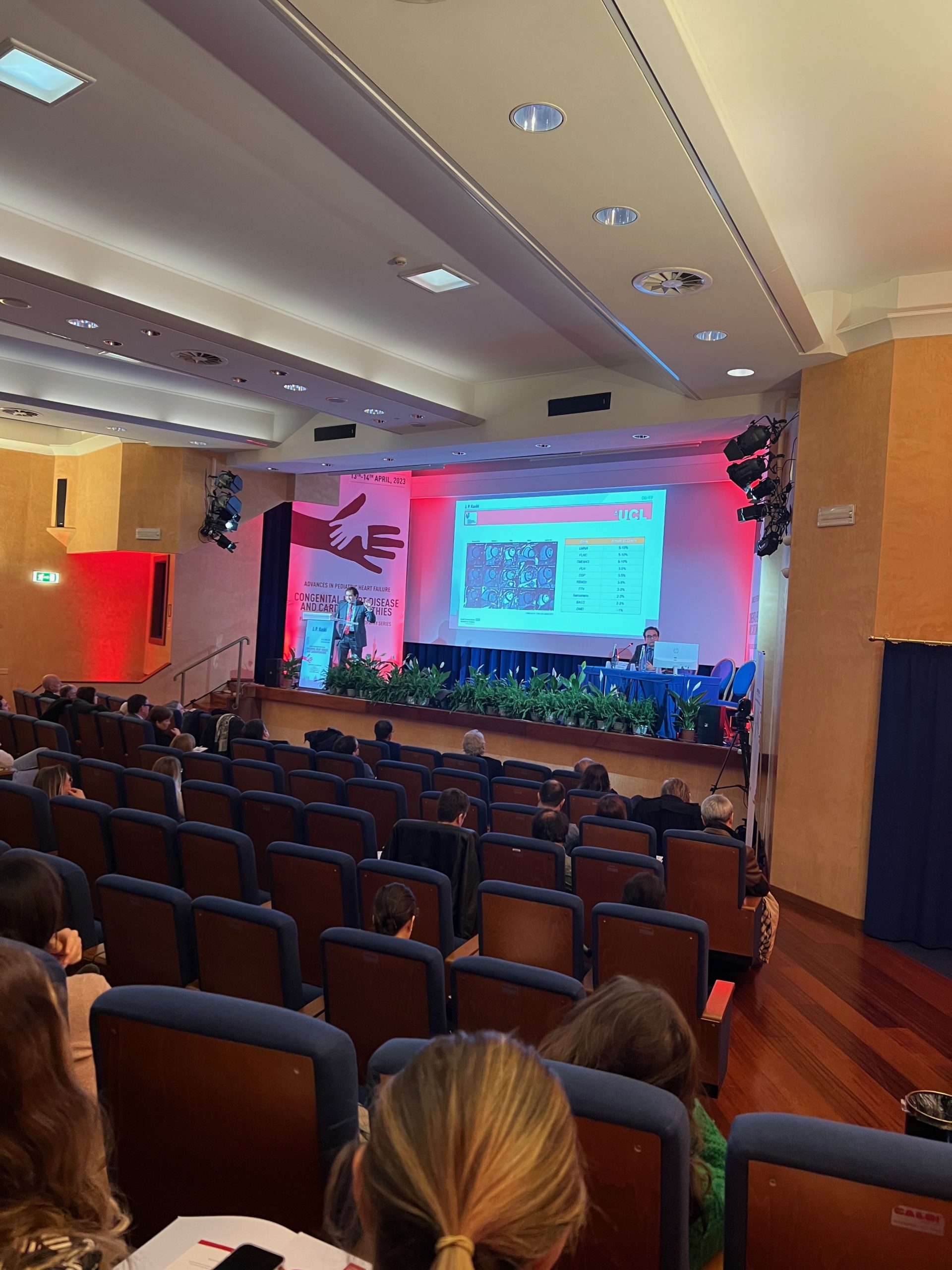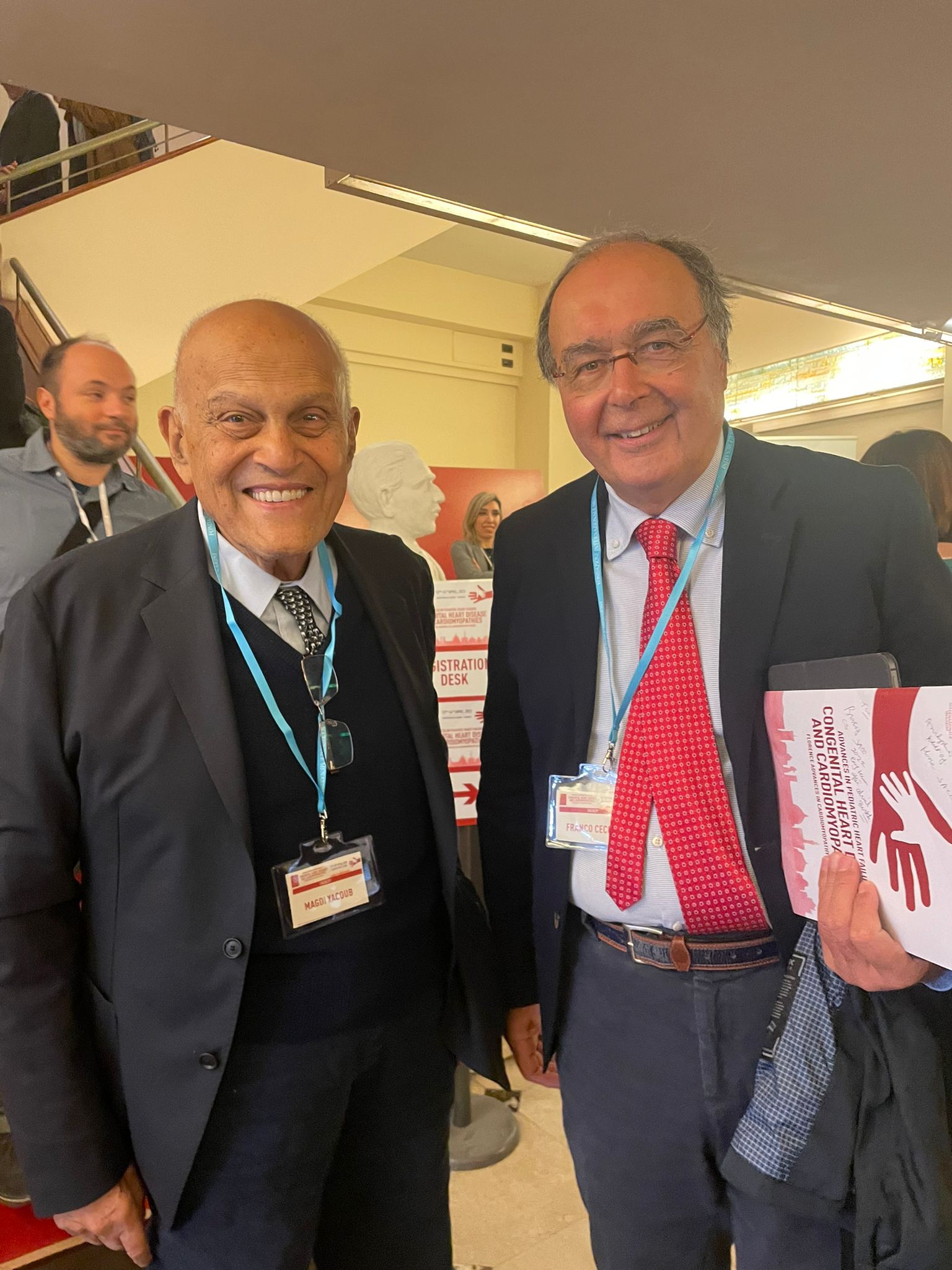Edited by: Dr. Alessia Argirò e Prof. Franco Cecchi
 On 13-14 April 2023 the congress “Advances in pediatric heart failure: congenital heart disease and cardiomyopathies”, organized by Prof. Olivotto, Dr. Favilli (Florence) and Prof Kaski (London), and supported by the Menarini Foundation. National and international experts discussed the current knowledge and novelties deriving from the results of scientific research on the treatment of cardiomyopathies in children and congenital heart diseases also in adults.
On 13-14 April 2023 the congress “Advances in pediatric heart failure: congenital heart disease and cardiomyopathies”, organized by Prof. Olivotto, Dr. Favilli (Florence) and Prof Kaski (London), and supported by the Menarini Foundation. National and international experts discussed the current knowledge and novelties deriving from the results of scientific research on the treatment of cardiomyopathies in children and congenital heart diseases also in adults.
But what is gene therapy in the first place? To better understand its mechanisms, let's take a step back and talk about the genetic code.
The structure and function of our organism are determined by our genetic code, the DNA, from which all the proteins indispensable for the needs of our body are produced. Just as a book is made up of letters with which it is possible to construct words and entire sentences, the genetic code is made up of a series of letters which, ordered in different sequences and lengths, constitute the "genes", now well identified, which serve to form the proteins essential for the functioning of our body, including the heart.
Just as in a book there may be typo errors, the lack of a sentence or even a chapter, alterations can also be found in the genetic code, which are called "mutations" or "variants".
Not always a genetic mutation is responsible for pathology, however in some cases an error in the genetic code usually present in only one of the pair of chromosomes that contain the genetic code, can allow the production of an incomplete or slightly altered and therefore malfunctioning protein.
While conventional therapies aim to limit the consequences deriving from a malfunctioning protein, or in some cases, how to bring the functioning protein from the outside (for example in the disease Fabry), gene therapy aims to solve the root problem.
Let us give some examples: if cardiomyopathy derives from the absence of a certain protein, it will be possible to supply the cell with the "correct" portion of genetic code in order to allow its production. Keeping the metaphor of the book, a missing word would be "added". Or, if the mutation leads to the production of a malfunctioning protein, through sophisticated mechanisms, it may be possible to "correct" the genetic code directly, just as one corrects a letter in a typo.
But how is it possible to transport genetic material inside cells? The most widely used approach currently involves the use of viral vectors, therefore viruses (usually adenoviruses) made inactive but capable of transporting and inserting genetic material into cells, injected intravenously.
While this approach might sound like science fiction on paper, gene therapy has already been approved in Europe for the treatment of genetic diseases in the fields of ophthalmology and neurology. In cardiology in the United States, clinical trials are currently underway for Fabry disease and Danon disease.
The preliminary results of these studies, conducted on a limited number of patients, and presented during the session dedicated to gene therapy of the congress hosted by AICARM, appeared encouraging. They showed an improvement in cardiac function parameters and quality of life in the majority of patients who joined the trial.
On the other hand, studies for the treatment of patients with specific mutations of hypertrophic and arrhythmogenic cardiomyopathy are still in the planning and approval phase by the United States regulatory agency (FDA).
However, the enthusiasm for this new technique is tempered by some problems still to be solved. For example, the use of the virus (adenovirus) as a carrier in fact involves some disadvantages, in particular, if the patient has antibodies against the virus itself because, as happens in many of us, he has had contact with the adenovirus in the past, he will not be able receive therapy as the same antibodies would neutralize the virus, resetting its effectiveness. Some doubts also remain about the effective duration of the therapy and the long-term effects of this technique.
In conclusion, gene therapy in cardiology is currently under study, the results on the use of this technique in Danon disease and Fabry disease are encouraging, although still preliminary.
While waiting for the final data of these studies, the hope is that this new type of technique could represent in the near future one of the therapeutic options also for patients with cardiomyopathy of genetic origin.

Advances in pediatric heart failure: congenital heart disease and cardiomyopathies
The conference

Advances in pediatric heart failure: congenital heart disease and cardiomyopathies
Prof. Magdi Yacoub with the President of AICARM Prof. Franco Cecchi
